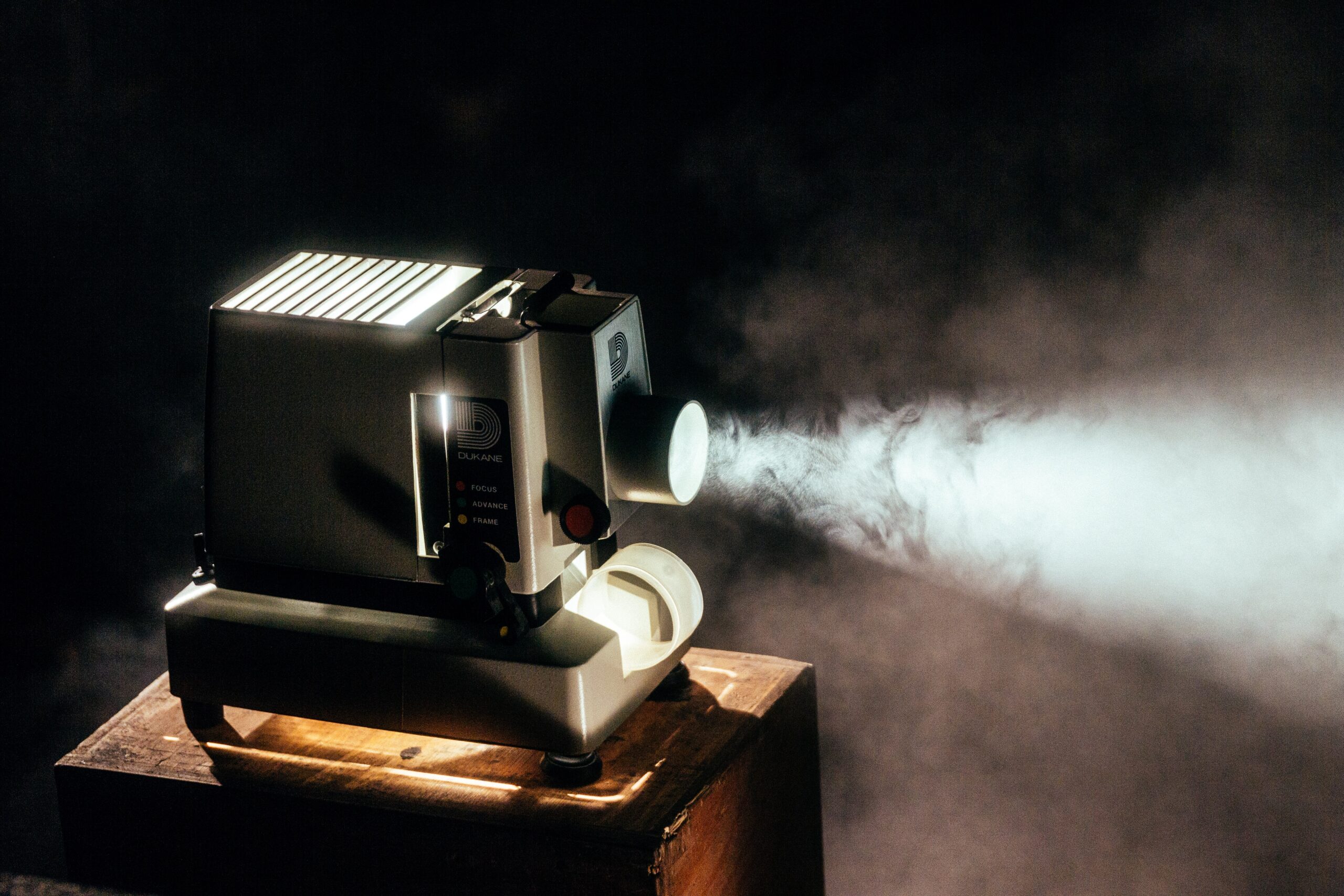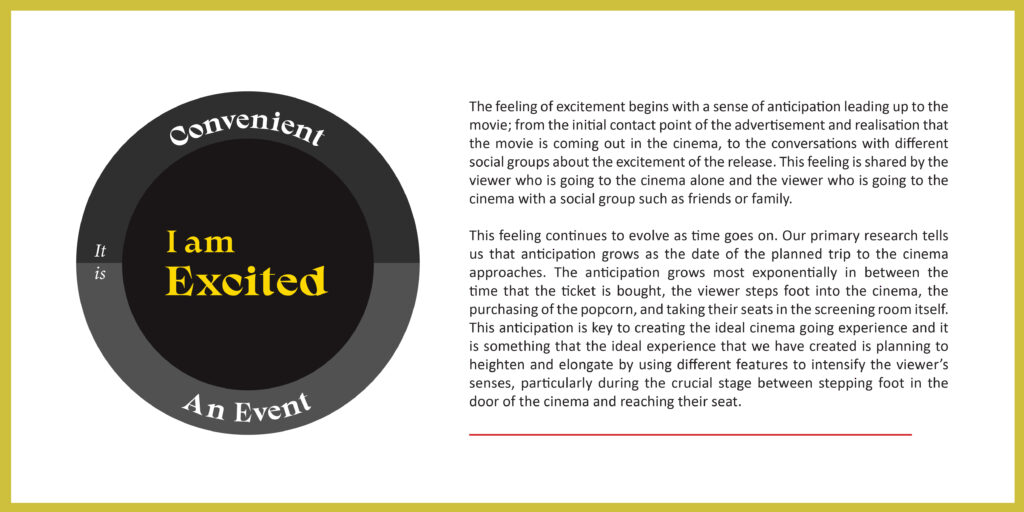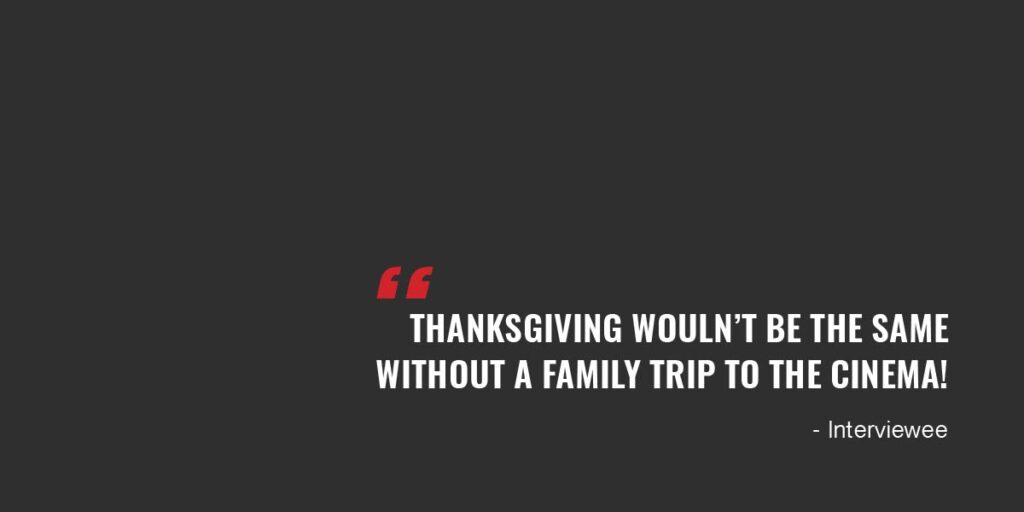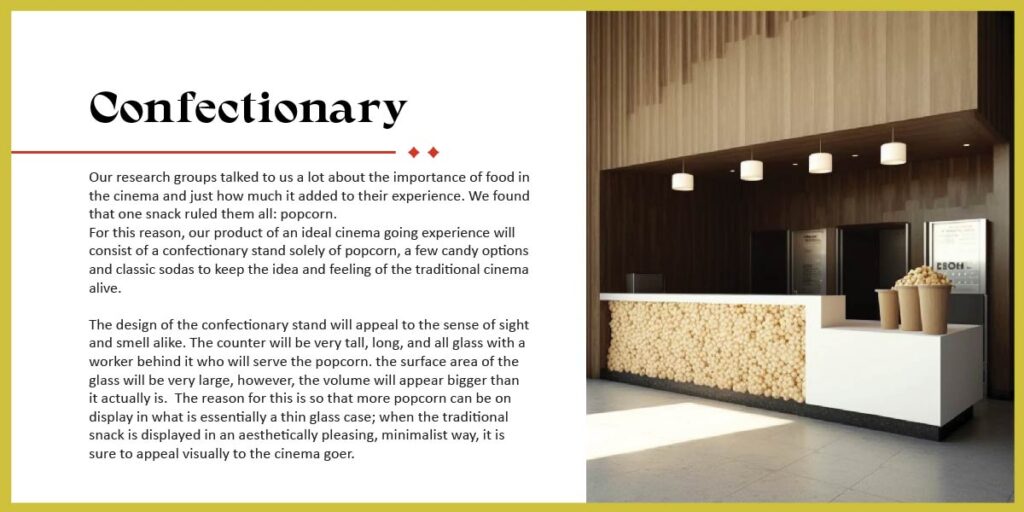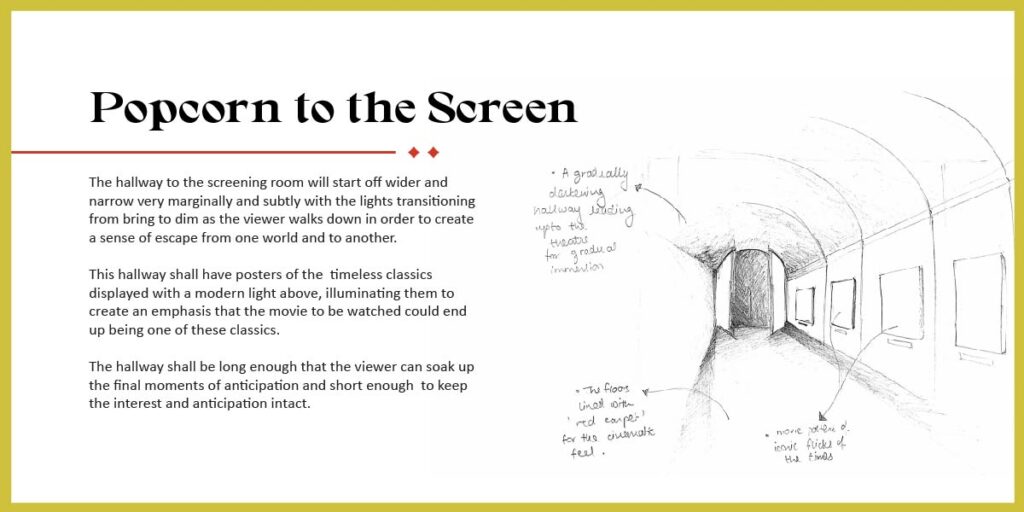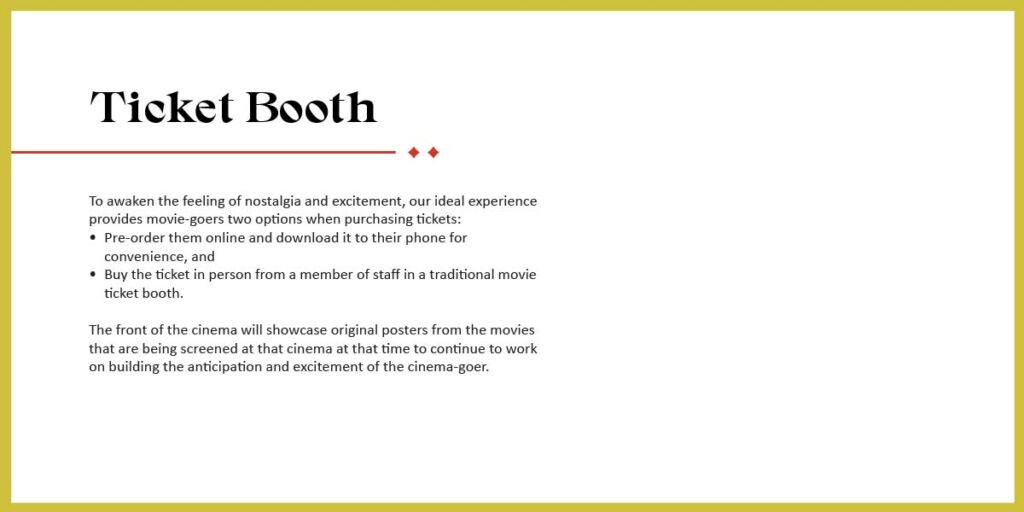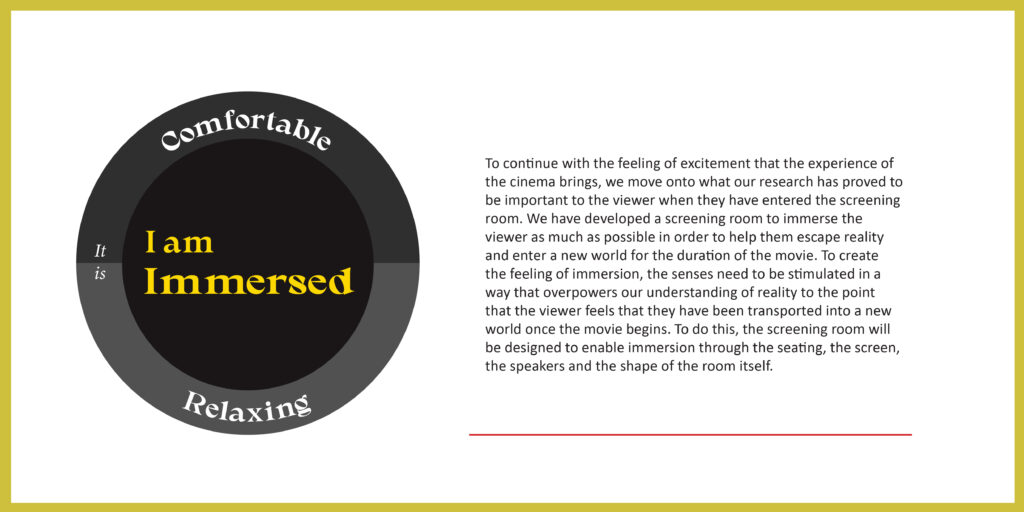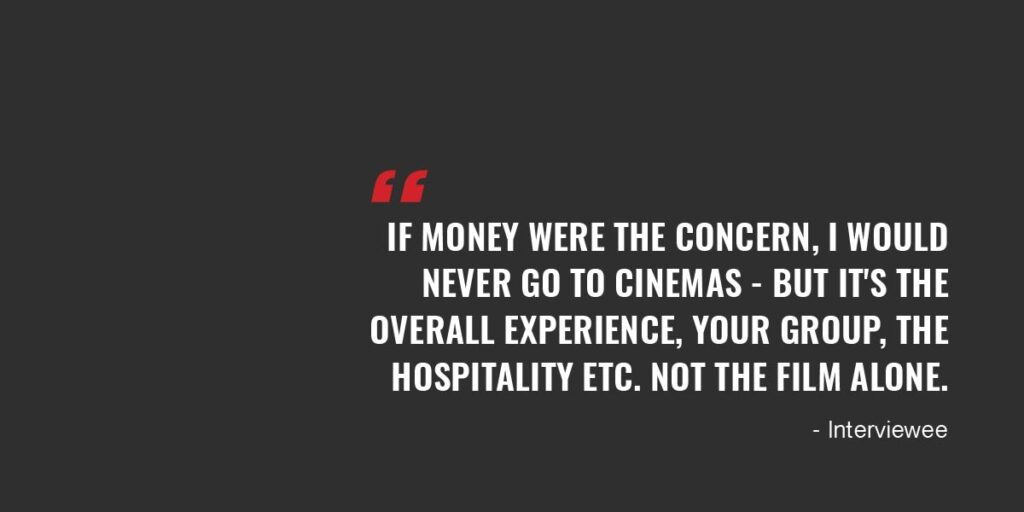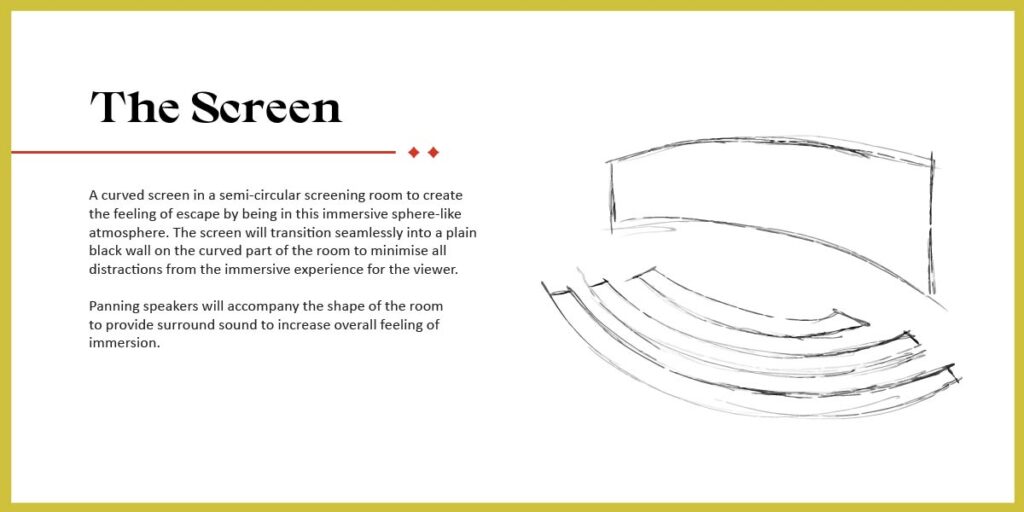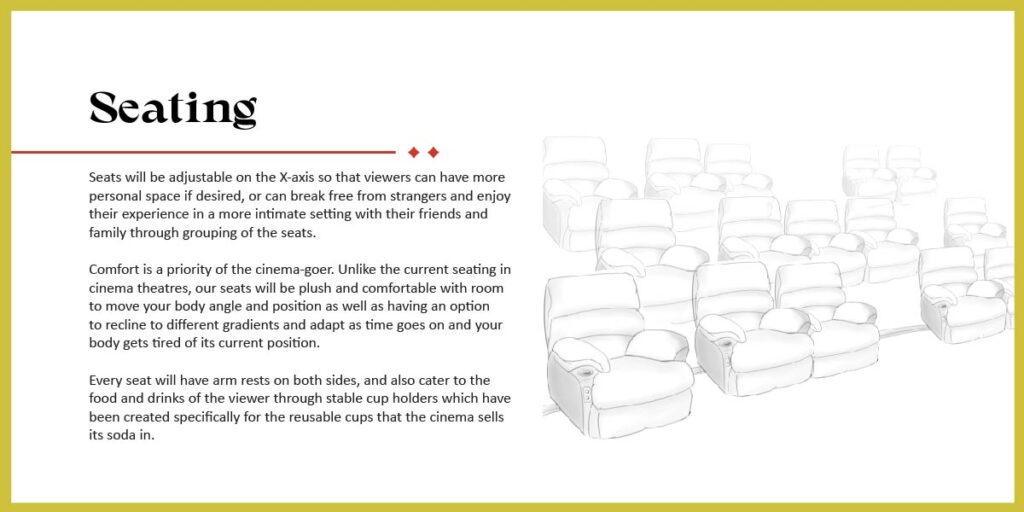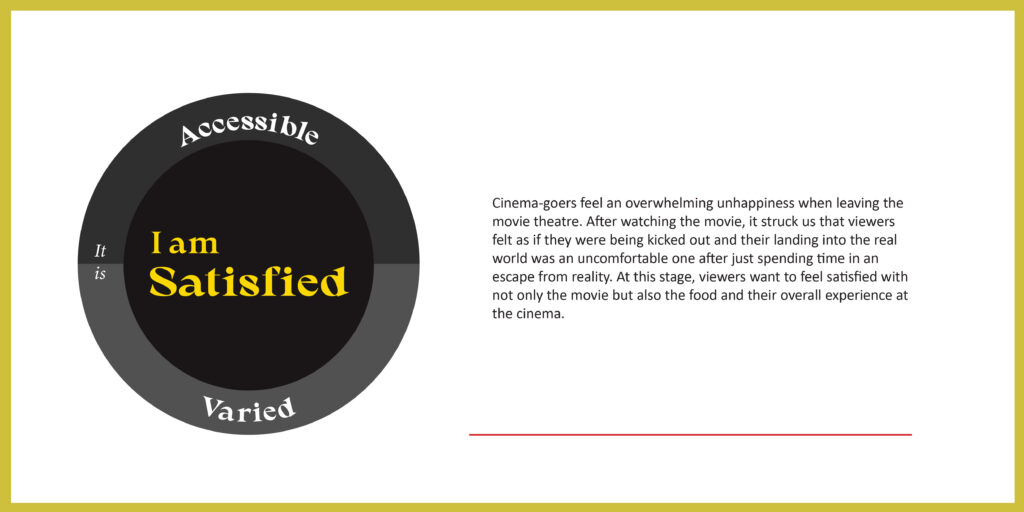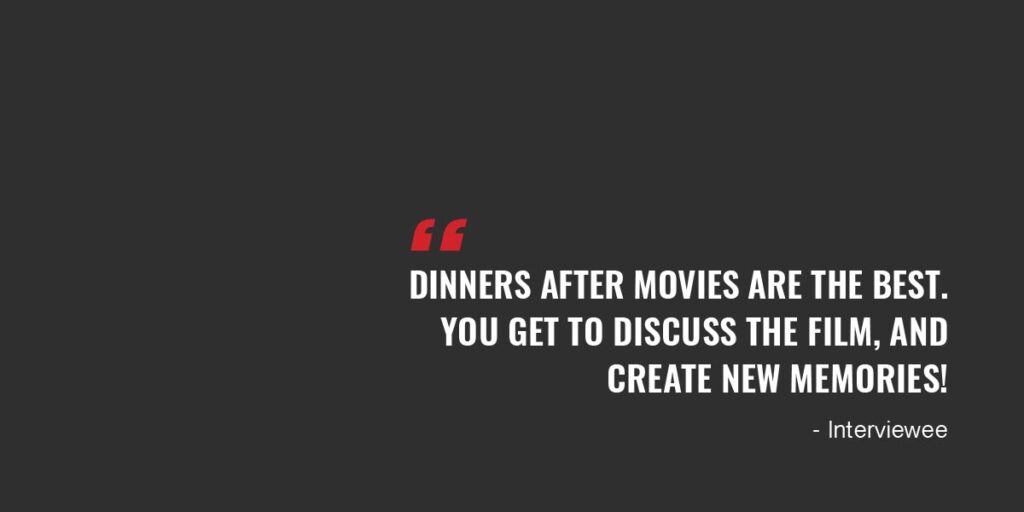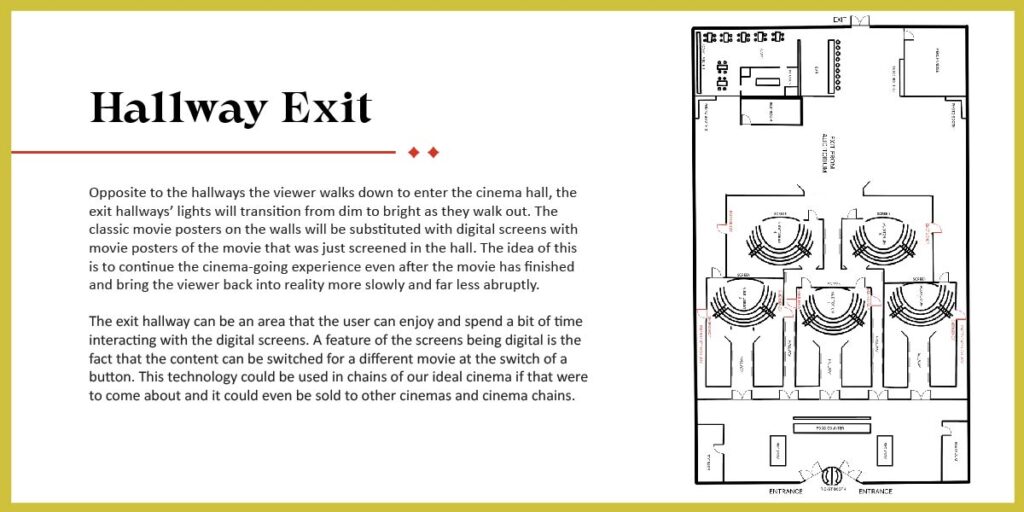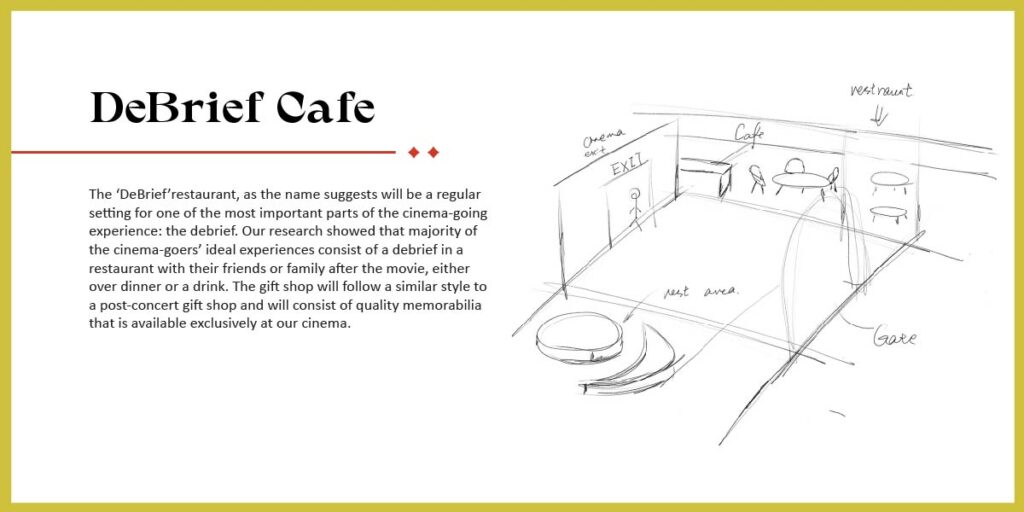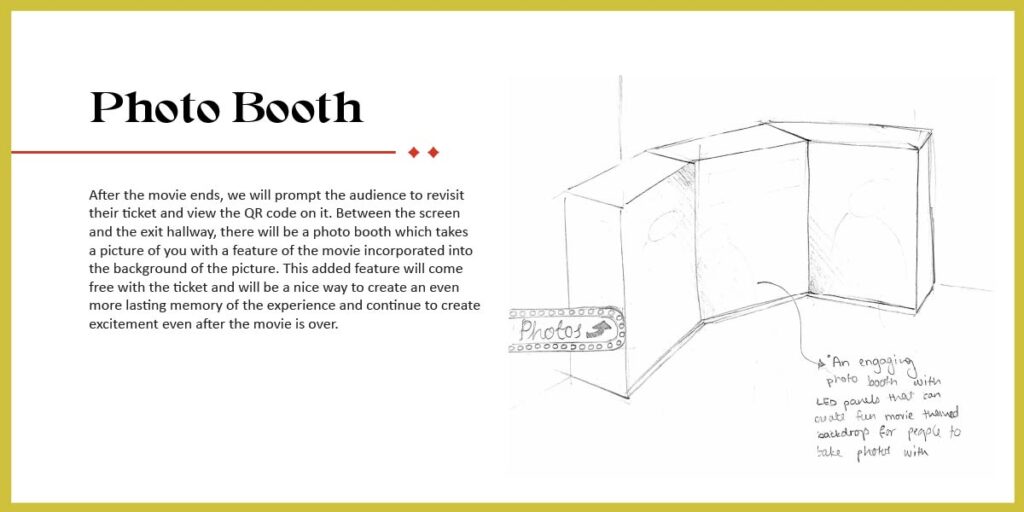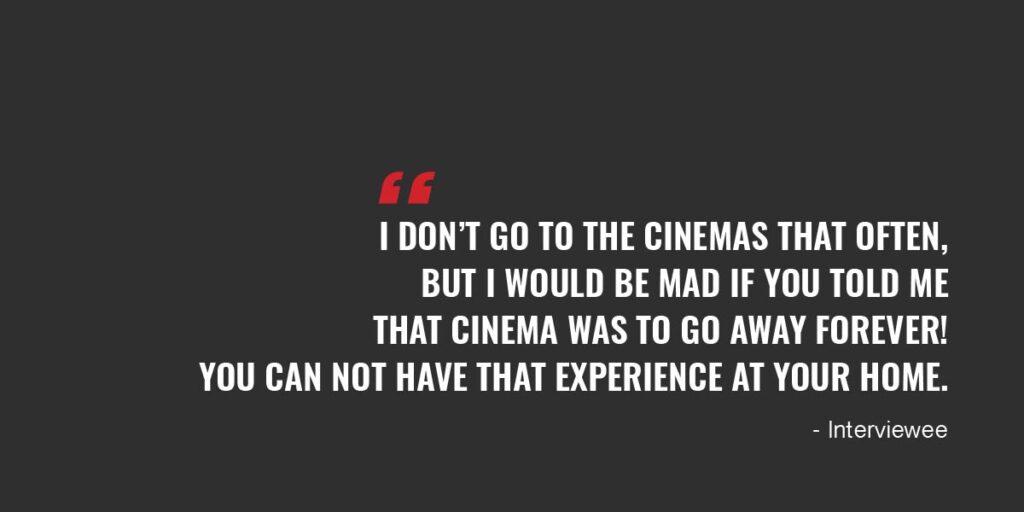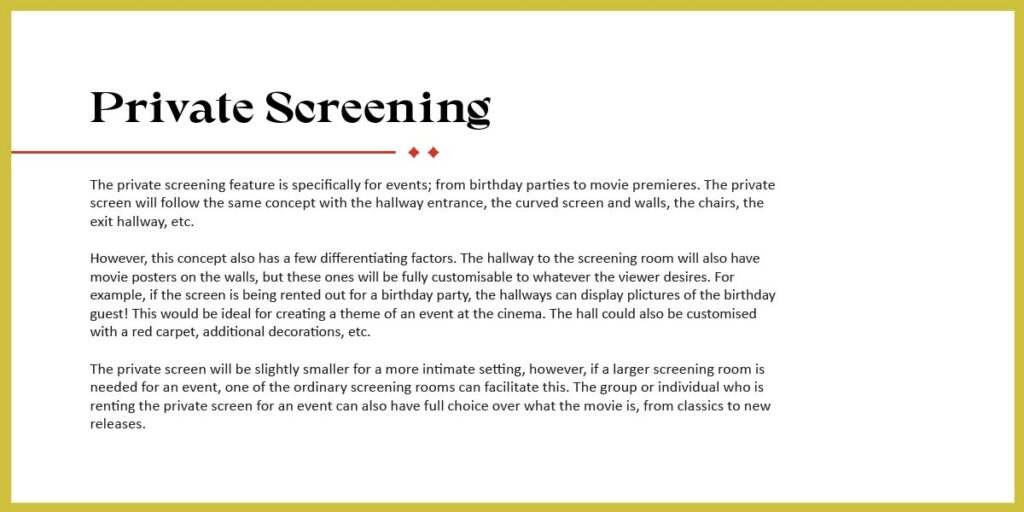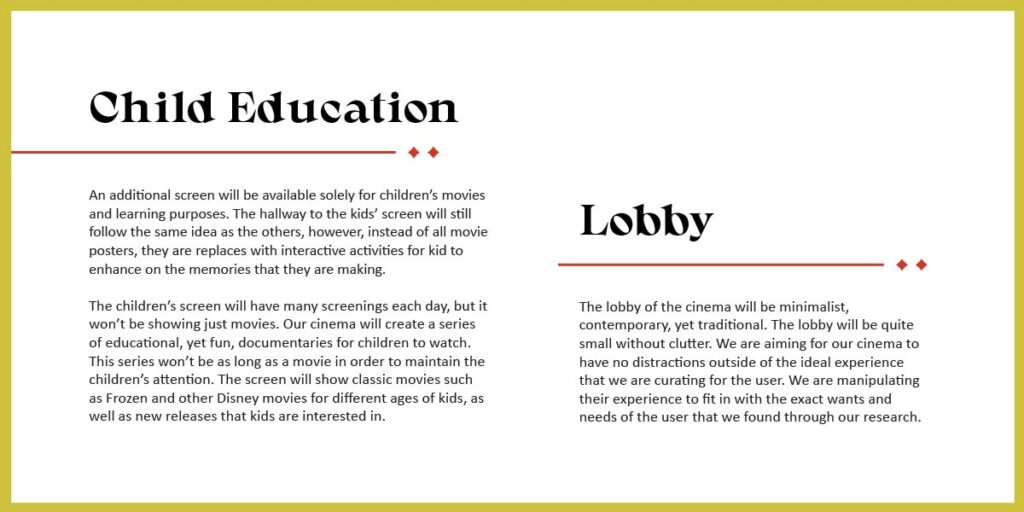Brief:
A 10-week-long Lextant research project, where my team and I
were instructed to pick a service and make it an ‘ideal’ experience.
PS: This is a conceptual project that focuses more on research
and its methods, than the final deliverables.
Main Insight:
The ‘Cinema Experience’ is not only about the film.
Solution:
A number of concepts were ideated to create the ideal
cinema experience.
My role:
UX Researcher and Strategist
Methods Used:
– Identifying users
– Secondary research
– User interviews
– Cultural probes
– Sensory cues
– Data affinitization
Deliverables:
A magazine that showcases our various
strategic solutions that target different
aspects of the cinema experience.

Online Streaming
As Covid-19 hit and lockdowns kicked in, cinemas took a real hit. They shut down to keep people safe, and that meant big trouble for their usual way of doing things. Box office earnings went down the drain, and both those big-name movie theatres and cozy indie spots felt the pinch.
With in-person screenings out of the picture, online streaming took over during lockdowns. It blew up existing platforms, even making big studios release movies directly online. While it’s cool to catch flicks from your couch, it does make us wonder about the fate of classic movie theatres and that awesome group cinema vibe. As things eased up, theatres hustled with safety measures and fresh ideas to pull folks back in. But no doubt, the pandemic lit a fire under digital watching and totally changed how we experience movies.
Primary Research:
We conducted a number of different activities as part of our research to understand people’s underlying thoughts, preferences, attitudes and emotions with respect to cinema.
Demographic:
In all, we interviewed a total of 18 people.
We targeted people from different age groups, genders, ethnicities and professions. We also interacted with people who watch movies occasionally as well as usual cinema-goers.
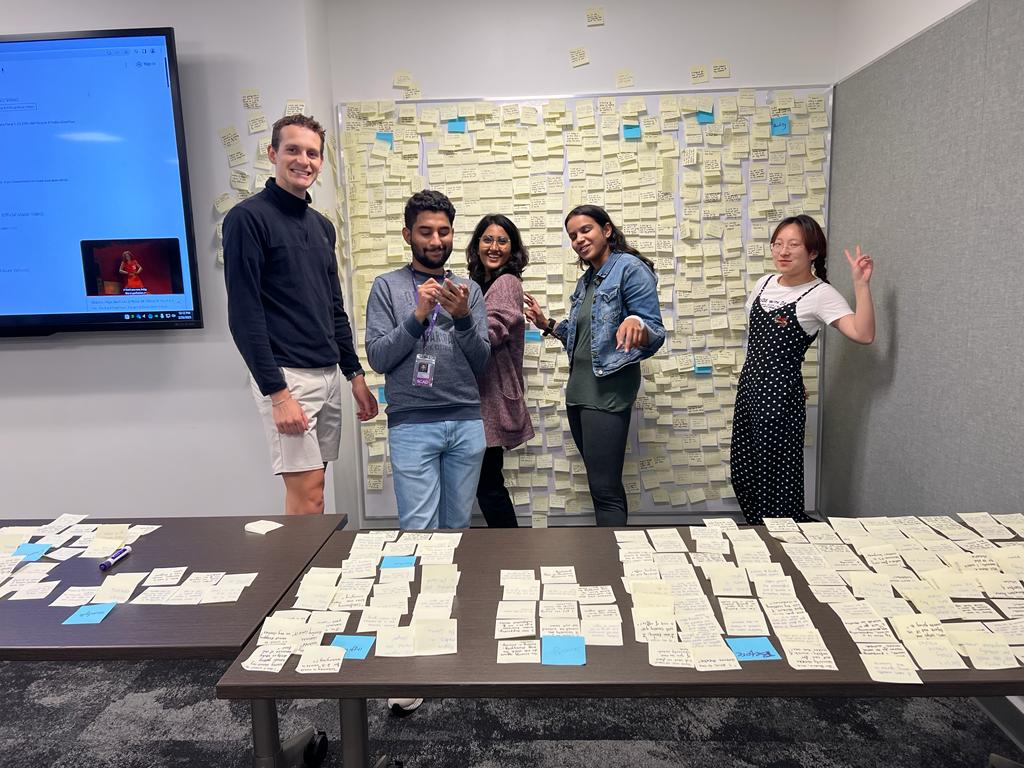
Cultural Probes
Data Affinitization
(My favourite part of the process!)
How Might We…
heighten the feelings of excitement before, immersion during, and satisfaction after the film?
Our Concepts
We divided the cinema experience into 3 sections:
before, during, and after the movie.
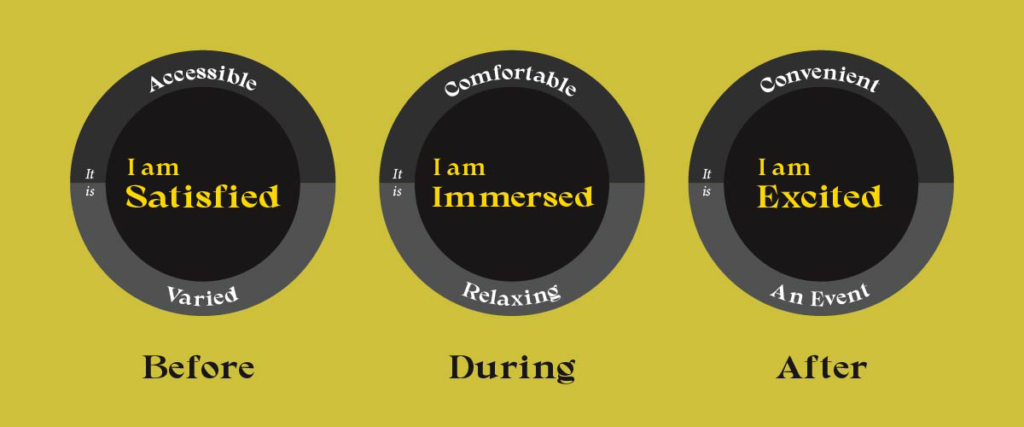
Before
The anticipation leading up to a movie is one of the most exciting parts of the experience. Our model aims to amplify this feeling to the perfect degree before experiencing the film itself.
During
The feeling of immersion is what the movie viewers seek out of their
film-watching experience. We have taken multiple actions to increase the
sense of immersion within our screening rooms.
After
This experience is a process, a story. All good narrations have a start, a middle
and an end. To end this story, we want to ease the viewers back into the reality
that they left went they stepped into the cinema hall.

